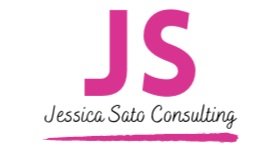9 Ways To #EmbraceEquity for International Women's Day
My 16-year old son and I were talking the other night, and he asked why we needed an International Women’s Day.
“If women want equal rights, then why do they need a special day for it? It’s not like there’s an international men’s day.”
On the surface, this might seem like a snarky comment, but he was genuinely curious, and it opened the door to a really great conversation about the barriers and challenges women uniquely face, the importance of celebrating women’s achievements, and the challenging lived reality of millions of women globally.
International Women's Day (IWD) is celebrated annually on March 8th to recognize the social, economic, cultural, and political achievements of women and to promote gender equality worldwide. IWD’s roots are tied to two separate events that both occurred on March 8, nearly 51 years apart.
In 1857, female textile workers in New York City marched against unfair working conditions and unequal rights. They wanted shorter work days and decent wages.
In 1908, women workers again marched through New York City, this time to protest child labor, sweatshop working conditions, and to demand women's suffrage.
International Women’s Day was officially recognized in 1910 by the United States and then by the United Nations in 1975 as a way to celebrate women's achievements, highlight the struggles they continue to face, and advocate for their rights.
This day is still important and necessary because gender inequality and discrimination worldwide are pervasive. Despite progress being made towards gender equality, women continue to experience gender-based violence, limited access to education and healthcare, wage gaps, and under-representation in leadership positions. These issues are even more prevalent in marginalized communities, such as women living in poverty, women with disabilities, and women from minority ethnic or racial groups, and in developing countries.
IWD serves as a reminder that gender equality is not just a women's issue but a human rights issue that affects everyone. In fact, this issue is so important, it’s one of the seventeen United Nations Sustainable Development Goals (SDG).
UN SDG #5 is focused exclusively on the achievement of gender equality, with a handful of very specific targets that include ending all forms of discrimination and violence, eliminating harmful practices such as female genital mutilation and forced marriages, and recognizing the value of unpaid care and domestic work, ensuring full and effective participation and equal opportunities for leadership at all levels and in all spheres. It also includes a push for universal access to sexual and reproductive health and reproductive rights, reforms to give women equal rights to economic resources and property ownership, enhancing the use of technologies to promote women’s empowerment, and strengthening policies and enforceable legislation for the promotion of gender equality.
These targets are lofty and it will require individuals, governments, and organizations to take steps to promote gender equality, consistently challenge harmful gender stereotypes, and proactively create more inclusive environments that allow women to thrive.
This starts with a push to #embraceequity, the theme for this year’s IWD. Gender equity and gender equality are two related but different concepts, and understanding the difference is important in achieving a world where everyone, regardless of gender, has equal opportunities to succeed.
Gender equality is the principle that men and women should have equal rights and opportunities in all aspects of life, including education, employment, and political representation.
Gender equity, on the other hand, is about fairness and justice in the way that men and women are treated. It recognizes that men and women have different needs and experiences based on their gender and aims to ensure that everyone has access to the resources they need to achieve their full potential, regardless of their gender.
One way to think about this is: equality is ensuring everyone has shoes. Equity is about ensuring that those shoes actually fit. See the difference?
While equal opportunities and equality as a whole are important, we likely won’t achieve that unless we recognize that every person starts at a different place, under different circumstances, and that the necessary resources required to reach your desired outcome may be different. We need to level the playing field and give people what they need to be successful. That means what’s required for one will likely be different for another to reach the same outcome.
How can you move the needle on gender equality? How can you #embraceequity on a practical level?
Be an advocate and ally for women. Listen and learn. Ask questions about women’s experiences and what’s getting in the way of their growth and success.
Use your voice to shout out women’s accomplishments, and say something when a woman’s idea or work goes unnoticed.
Call out inequities and inequalities, respectfully.
Speak out against gender-based violence and abusive practices against women and girls.
Celebrate women’s achievements, especially when they break through previously unbroken barriers.
Set robust impact goals for your business related to gender, measure them, and hold yourself accountable for real progress and results.
Do the work to address your own microaggressions and unconscious bias. Recognize that gender is not the same as biological sex, and that each person’s lived experience matters.
Embrace practices that create more equity in your business and community, and actively seek to eliminate biases.
Elevate topics related to gender inequity and inequality. Discuss it at meetings, review your operational policies, and refine your hiring and promotion practices.
I could go on and on, but you get the idea. There are countless ways to strive for gender equality and much work still to be done, despite the progress we’ve made. International Women’s Day serves as a powerful reminder of it.
What can you do to #embraceequity and advance gender equality in your life and with your business?



